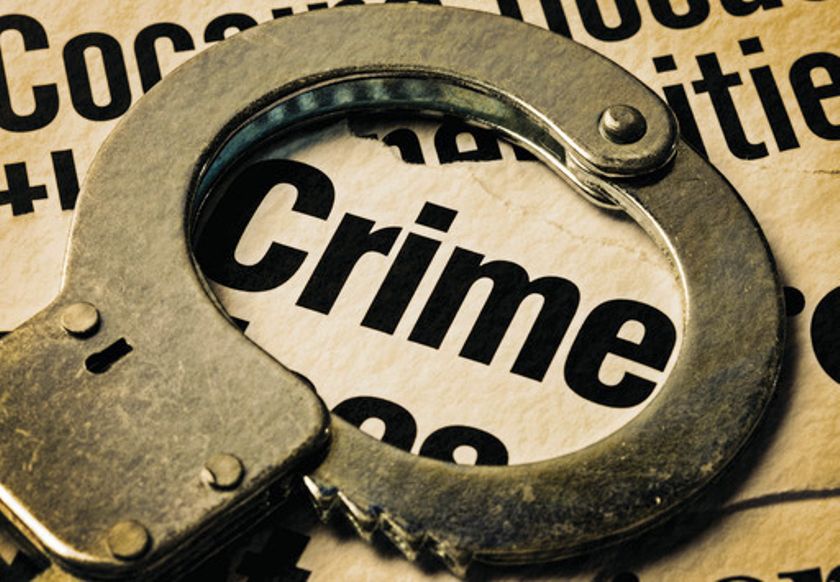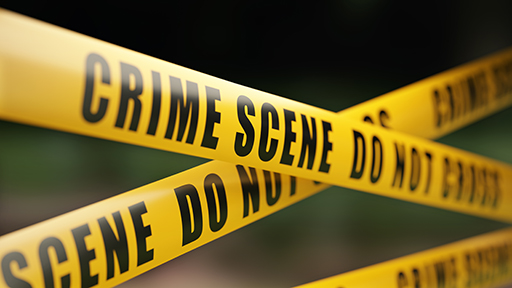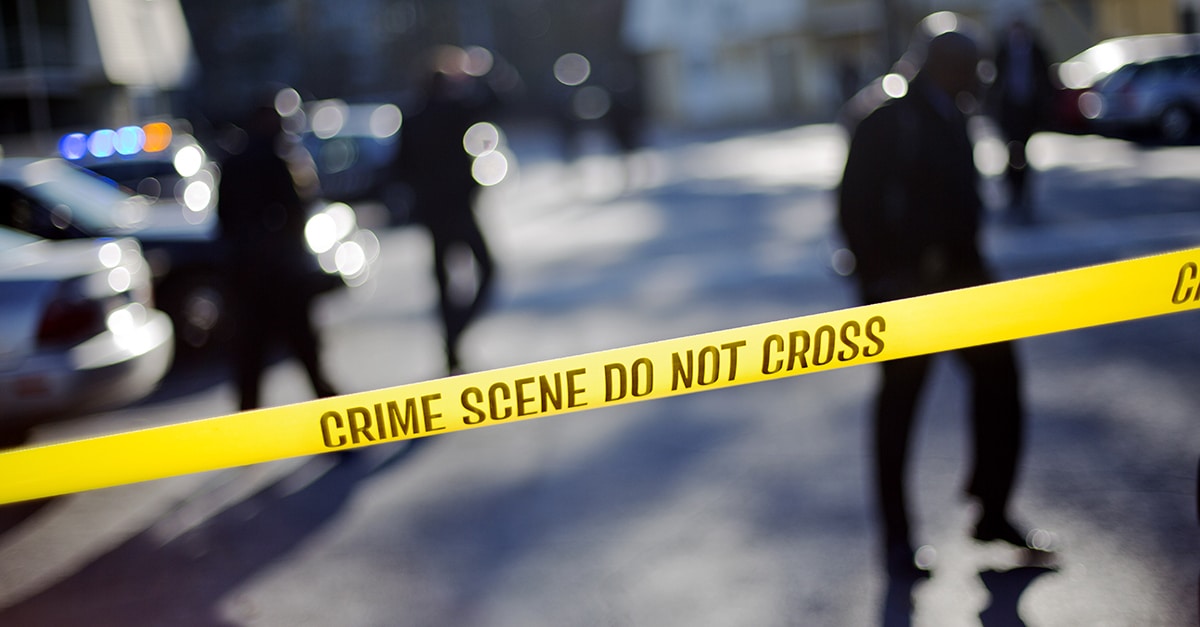Have you ever found yourself drawn to the stories behind major crimes, perhaps even wondering about the raw evidence? It’s a very natural human curiosity, yet it often leads us to confront some of the most difficult images imaginable. We're talking about crime scene photos, and sometimes, they show a truly gory side of human events. These images, as you might guess, are incredibly powerful and, frankly, can be quite disturbing to look at, which is something many people experience, as it turns out.
It’s almost like a magnetic pull, isn't it? People seem to want to know what happened, to see the pieces of a puzzle that the public rarely gets to view directly. This fascination, you know, extends to exploring the latest crime news and updates, often found on platforms like MSN, where live coverage and insights into criminal justice are readily available. Yet, when the conversation turns to the actual visual evidence from these terrible events, like the crime scene photos that show, well, the really messy parts, a different kind of feeling takes over.
For some, this curiosity is tied to understanding the sheer scale of a tragedy, or maybe even the unusual nature of a crime, especially when so many victims were involved, or when the public and media interest reached intense levels. There's a deep human desire to process these events, even if the visual details are, quite frankly, difficult to stomach. And, as a matter of fact, the internet does contain graphic images, like autopsy and crime scene photos, which many people find deeply unsettling, and some even report being traumatized by them.
- Bryce Dickey
- Sweetie Ice Cream
- Activ Shampoo And Conditioner
- Clay Aiken Height
- Committed A Skeptic Makes Peace With Marriage By Elizabeth Gilbert
Table of Contents
- The Purpose of Crime Scene Photos: More Than Just Shock
- The Public's Fascination and the Gory Truth
- Access and Restriction: Who Gets to See?
- The Ethics of Displaying Gore
- The Role of Media and Online Platforms
- Frequently Asked Questions About Crime Scene Photos
- Navigating the Digital Space and Personal Well-Being
The Purpose of Crime Scene Photos: More Than Just Shock
When you think about crime scene photos, it’s easy to focus on the shocking aspects, but their primary role is actually quite different. Police and investigators take these pictures for a very specific and important reason: to document everything, every single piece of evidence, exactly as it was found. This visual record is pretty much essential for understanding what happened, building a case, and helping to bring those responsible to justice. It's about capturing the story the scene tells, before anything gets moved or changed.
These images are, in a way, silent witnesses. They show the layout of a place, the position of objects, the presence of blood, or other bodily fluids, and any signs of struggle or violence. For example, photos taken at the scene of a murder, like that of Devlin Beauchamp, who was found bludgeoned in his bathtub, are used to examine the evidence and help solve the case. They are vital tools for forensic experts, prosecutors, and even defense attorneys, providing a factual basis for discussions in court. So, while they can be very hard to look at, they serve a truly critical function in the justice system.
The Public's Fascination and the Gory Truth
There's a curious human tendency to be drawn to the darker aspects of life, and crime, especially violent crime, certainly falls into that category. This interest often extends to wanting to see the actual visual evidence, even when it involves crime scene photos that show, frankly, gruesome details. It's a complex mix of morbid curiosity, a desire for truth, and perhaps, a way to process the unfathomable. People might search for "gory of dead people videos" or photos, or look for images related to notorious cases, driven by this deep-seated interest.
- Georgia Holt Funeral
- Blumene Hair Pro
- Diamond Eyeliner
- Alta Dena Ice Cream
- Kim Kardashian Wedding Ring Kanye
However, the reality of these images is often far more stark and impactful than people anticipate. When you view these pictures, you're not just seeing a story; you're seeing the raw, unfiltered aftermath of human suffering. This direct exposure to the "gore" can be incredibly unsettling. It's not like a movie or a fictional account; this is real, and that distinction makes all the difference, you know. For instance, the Betty Gore autopsy photos, taken shortly after her murder in June 1980, were described as "heart wrenching and horrible to look at," which pretty much sums up the feeling for many.
Notorious Cases and Their Visual Legacy
Some of the most infamous crimes in history are remembered not just for the acts themselves, but also, perhaps, for the disturbing images associated with them. These serial killer crime scene photos, for example, really show the horrors some of the most notorious murderers put their helpless victims through. It's a chilling reminder of extreme violence and human depravity. Think about the cases that have captured public attention for decades, and you'll often find that the visual evidence, even if rarely seen by the general public, plays a significant role in how these events are remembered.
For instance, the gruesome details surrounding the deaths of Nicole Brown Simpson and Ron Goldman in June 1994, left "slaughtered in pools of their own blood," are etched into public memory, and certainly, the crime scene images, if ever widely circulated, would be incredibly impactful. Then there are the "Manson Family murders" at Cielo Drive, over 40 years ago, which were some of the most notorious and shocking killings ever. The grotesque nature of that incident, you see, is something that has lingered in collective consciousness. And, as a matter of fact, the story of Jeffrey Dahmer, a notorious cannibal serial killer, who was responsible for the deaths of at least 17 people, also brings to mind the chilling reality of his Wisconsin apartment, where authorities found disturbing evidence after one of his victims managed to escape in 1991. The horrific crime scene involving Candy Montgomery, where she murdered her friend and the wife of the man she had an affair with, was also described as showing a "crime of passion," which suggests the raw intensity captured in such images. More recently, the Dee Dee Blanchard murder in 2015, whose crime scene photos were released by April Johns in a Google Drive link, also highlights how these images can become public, albeit sometimes controversially.
The Emotional Toll of Viewing Graphic Images
It’s really important to talk about the impact of seeing these kinds of images. Many people, it turns out, report being genuinely "traumatized" by crime scene photos they've stumbled upon. This isn't just about feeling a little uncomfortable; it can be a deeply unsettling experience that stays with someone for a long time. The human mind, you know, isn't always prepared to process such raw, visual depictions of violence and death. These images can trigger feelings of horror, sadness, anger, and even fear, which is pretty much a natural reaction to such intense visual information.
The distinction between fictional gore in movies or video games and real-life crime scene photos is, frankly, huge. One is designed for entertainment, while the other is a stark record of someone's worst moment. When you see actual evidence of suffering, it bypasses the usual filters we have for fictional content. This can lead to lasting emotional distress, nightmares, or a general sense of unease. So, it's not just about curiosity; it's about recognizing the very real emotional cost that can come with encountering such graphic material, which is something we should all be mindful of.
Access and Restriction: Who Gets to See?
You might wonder why, if these photos are so important for justice, they aren't just out there for everyone to see. Well, the truth is, police and law enforcement agencies are very careful about who gets access to crime scene photos. They restrict access, sometimes for months or even years after an investigation concludes. This isn't just about keeping secrets; it's about protecting the integrity of an ongoing case, respecting the victims and their families, and also, frankly, preventing the public from being exposed to unnecessarily disturbing content. Crime scenes are very rapidly cordoned off, and photographers, unless they are official personnel, are banned from the area, which is a pretty standard procedure.
Access to these sensitive materials is usually limited to those directly involved in the investigation, prosecution, or defense. Even then, there are strict protocols in place. Sometimes, though, certain documents and images can be obtained through legal processes, like the Freedom of Information Act (FOIA). The FBI’s FOIA library, for example, contains many files of public interest and historical value, in compliance with the National Archives and Records Administration (NARA), but even these are often redacted or carefully managed to balance transparency with privacy and sensitivity. Yet, as we've seen with cases like the Dee Dee Blanchard murder, sometimes these images do find their way into public view through unofficial channels, which, you know, raises a whole host of other questions.
The Ethics of Displaying Gore
This is where things get a bit tricky, isn't it? The question of whether to display or even search for crime scene photos that show gore brings up some very serious ethical considerations. On one hand, there's the argument for transparency, for understanding the full reality of a crime, and for historical record. On the other hand, there's the profound respect owed to victims and their families, whose worst moments are captured in these images. It's a very delicate balance to strike.
When media outlets or individuals share these photos, they are, in a way, making a choice about what the public needs to see versus what might cause harm. Is it truly necessary for the public to view the "gory photos with equally disturbing backstory" that sometimes circulate online, as mentioned in forums like Nairaland? Or does it simply feed a morbid curiosity without adding genuine understanding or contributing to justice? These are not easy questions to answer, and they require a lot of thought about the potential impact on both the viewers and, more importantly, the memory of those who suffered.
The Role of Media and Online Platforms
The way news and information are shared today, especially on platforms like MSN, means that stories about crime, even very violent ones, can reach a huge audience very quickly. You can explore the latest crime news and updates, including live coverage and top stories, which is pretty much what many people do. However, this wide reach also means that discussions around crime scene photos, and their graphic nature, become more widespread. It’s a very interesting dynamic, as the public's appetite for true crime stories seems to be growing, yet the visual reality of these events remains profoundly impactful.
Online forums and social media, in particular, can be places where these kinds of images, sometimes unofficial or leaked, are shared and discussed. This creates a space where people might encounter "gory of dead people photos" without much warning or context. It’s a bit of a wild west, in some respects, where the usual protections and ethical considerations that traditional media might uphold are sometimes absent. This means that individuals themselves need to be very mindful of what they seek out and what they consume, especially when it comes to content that can be deeply disturbing. Learn more about on our site, and also check out this page for more on how crime news is presented.
Frequently Asked Questions About Crime Scene Photos
Why are crime scene photos sometimes released to the public?
Well, sometimes crime scene photos become public due to legal processes, like Freedom of Information Act requests, or, you know, they might be introduced as evidence during a public trial. In some rare instances, they can even be leaked. The intention behind official releases is usually for transparency or to inform the public about significant events, though it's often a very carefully considered decision given their sensitive nature.
Can viewing graphic crime scene photos be harmful?
Yes, absolutely. As a matter of fact, many people report being genuinely traumatized by seeing graphic crime scene photos. These images can cause significant emotional distress, including anxiety, nightmares, or even symptoms similar to PTSD. It's really important to recognize the potential for psychological harm, especially since these are real images of suffering.
Are all crime scene photos gory?
Not all crime scene photos show gore, no. Many are taken to document details like the layout of a room, fingerprints, or non-bloody evidence. However, in cases of violent crime, photos will often capture the gruesome realities of the scene, including blood, injuries, and fatalities. So, it really depends on the nature of the crime itself, as you might expect.
Navigating the Digital Space and Personal Well-Being
In this day and age, with so much information just a click away, it's pretty much up to each person to decide how they engage with content, especially something as intense as crime scene photos that show gore. While the interest in true crime and understanding the details of violent events is very real, it's also crucial to protect your own mental well-being. Thinking about the potential impact before you click on something that might be disturbing is a good idea, you know.
It’s about being mindful of what you expose yourself to, and recognizing that some images, once seen, can't really be unseen. For those who do seek out or stumble upon such content, remembering the human element behind every image is vital. These are not just pictures; they represent real people, real suffering, and real lives. So, if you're exploring crime news or true crime stories, consider seeking out reputable sources that prioritize ethical reporting and victim sensitivity. You can explore a wide range of crime news and updates, including live coverage and criminal justice insights, on platforms like MSN's crime section, which typically balances information with appropriate discretion.
Related Resources:



Detail Author:
- Name : Rickie Rutherford
- Username : jaren.towne
- Email : sawayn.eleazar@stroman.com
- Birthdate : 2000-03-01
- Address : 30052 Mustafa Junctions Apt. 181 Mitchelltown, AL 61223
- Phone : 601.789.1476
- Company : Schamberger-Sanford
- Job : Millwright
- Bio : Animi est occaecati sit optio blanditiis omnis. Suscipit repellat quo vel labore rerum itaque. Temporibus id dolores praesentium error.
Socials
linkedin:
- url : https://linkedin.com/in/ashly_xx
- username : ashly_xx
- bio : Quisquam accusamus ab a sed.
- followers : 5742
- following : 2481
tiktok:
- url : https://tiktok.com/@ashly5822
- username : ashly5822
- bio : Voluptatibus iusto vitae quos molestiae velit neque consequuntur sint.
- followers : 4460
- following : 422